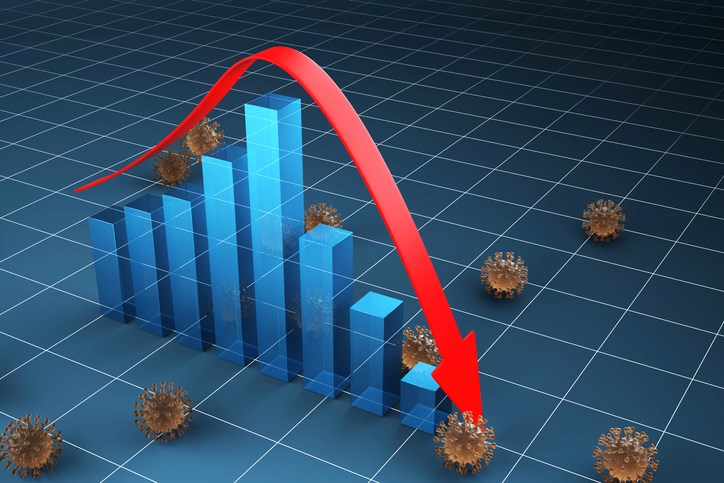REGINA — The Saskatchewan Ministry of Health released their biweekly community respiratory illness surveillance program (CRISP) report for Jan. 6, covering the period Dec. 18 to Dec. 31, 2022, and these are five things you should know about it.
Influenza and COVID-19 case counts declining
COVID-19 lab-confirmed cases decreased from 326 to 302. Test positivity increased to 6.7 per cent.
Influenza positive lab tests decreased from 122 to 69 with a test positivity of five per cent.
RSV activity is increasing – from 167 to 176 positive lab tests with the highest respiratory virus test positivity of 14.6%, mainly in preschool age children.
The majority of respiratory virus hospitalizations continue to be COVID-19, followed by RSV.
Weekly visits to Saskatchewan emergency departments for respiratory-like illness (RLI) are stable at 33.2 per 1,000 visits last week compared to 32.3 per 1,000 this week. Calls to 811 HealthLine for RLIs have increased over the past month, from 116 to 141 per 1,000 calls.
The number of new COVID-19 outbreaks in high-risk settings remained steady at four to six per week over the past month.
COVID-19 test positivity is increasing
COVID-19 test positivity in Saskatchewan was 6.7 per cent, an increase from 5.8 per cent last week. Cases are largely in the 65 and over age group (47 per cent).
BA.5 and its sublineages are the most commonly detected variants at 93.9 per cent of current reporting period, followed by BA.2 (four per cent) and BA.4 (1.4 per cent).
The first detections of Omicron sublineage XBB.1.5 occurred in this reporting period.
COVID-19 hospitalizations decreased from 103 to 92 admissions per week.
COVID-19 ICU admissions remain stable at eight admissions per week – most were 60+ years old.
The proportion of staffed inpatient beds occupied by COVID-19 patients has decreased from 6.5 per cent to 5.7 per cent in the most recent week compared to the previous week.
COVID-19 deaths have dropped from an average of 11 deaths per week in the previous three weeks to three reported deaths in the most recent week.
Influenza down
Influenza detections decreased from 122 to 69 positive lab test in this reporting period.
Influenza test positivity dropped from 20.1 per cent in the first week of December to five per cent in the week ending Dec. 31.
Influenza cases are predominately in the 20 – 64 year age group (41 per cent).
One influenza outbreak in a high-risk setting was reported in the past week.
Influenza hospitalizations have decreased in this reporting period; however, influenza ICU admissions increased.
Deaths due to Influenza continue to occur with three deaths reported in the last two weeks.
Test positivity remains highest in the Far North East (La Ronge and area) at 15.8 per cent and North East (Melfort and area) at 25 per cent.
Other respiratory viruses
RSV detections increased over the past month from 83 to 176 cases last week. Lab test positivity tripled from 5 to 15 per cent.
RSV cases are largely in the pediatric age group – in the most recent surveillance week 124 cases (71 per cent) were aged 0 – 4 years.
RSV hospitalizations have increased slightly from 44 hospitalizations to 47 in the most recent week. The majority of RSV hospitalizations occurred in children aged 0 – 19 years.
‘Other’ respiratory viruses fluctuated between 121 to 155 lab confirmed cases per week over the past month.
Outbreaks of ‘other’ viruses in high-risk settings varied between zero and five outbreaks per week over the past month.
The vaccine situation
With the exception of Regina, all areas of the province have less than 50 per cent of their population up-to- date for COVID-19 vaccines. Less than half of individuals aged 50+ have had more than one booster dose (46 per cent).
Of those aged five years and older, 21 per cent have received their latest booster dose in the last six months. Only 18 per cent of individuals aged 12+ years have received a bivalent booster dose (n = 191,441 doses).
According to the province, having a COVID-19 booster in the last six months reduces the risk of a COVID-19 death eight times compared unvaccinated individuals and over four times compared to those without a recent booster dose.
The influenza immunization campaign launched October 11, 2022. To date, one-quarter of the Saskatchewan population (25 per cent) have received an influenza vaccine, a one percent increase from the previous reporting period. This is a 12 per cent decrease in doses administered compared to the same time last year.





